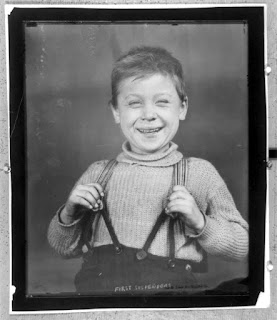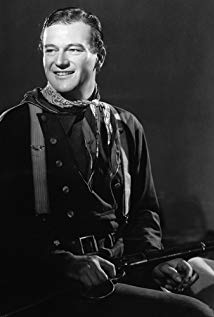Christmas in Victorian America (1837-1901) wasn’t always what we think of as a traditional holiday. In colonial times, Americans from different religions and national origins kept the holiday (or didn’t keep it) in ways carried over from the Old World. Puritans, for instance, tended to ignore Christmas because the Bible was silent on the topic. Many kept this attitude until the 1870s. Virginia planters took the occasion to feast, dance, gamble, hunt and visit, following what they thought were old Christmas customs in English manors. Even as late as the early nineteenth century, many Americans hardly took notice of the holiday at all.
However, we must not forget the large Dutch and German populations in the Northern colonies. These immigrants had no qualms about celebrating the winter holiday, and many of our modern traditions come from these backgrounds.
By the mid-century, improved communication, improved travel and a generally increased pace of life created the need for common customs. People longed for what they saw as traditional values, particularly centering around the family hearth. The various Christmas practices began to merge into one American holiday. Its relative lack of theological or Biblical authority “ironically allowed Christmas to emerge as a highly ecumenical event in a land of pluralism.”
Especially in the Northern cities, Christmas emerged as a tool to forge a national culture. By the 1850s, it had captured the Northern imagination and was making inroads in the South. The Civil War intensified the appeal of the holiday. “Its sentimental celebration of family matched the yearnings of soldiers and those they left behind. Its message of peace and goodwill spoke to the most immediate prayers of all Americans.”
The Northern victory in 1865 solidified many of the modern traditions, and customs and symbols of Yankee origin came to stand for the American Christmas. This new “revived Christmas” offered a retreat from contemporary life, but cast in contemporary terms. Americans varied old themes and introduced new symbols to create something uniquely their own.
Christmas rituals first got a toehold in New York, with savvy merchants quick to realize their commercial value. German bakeries began staying open late to decorate their windows with red silk buntings and holly. Holiday shoppers couldn’t resist the cakes, toys and candies displayed under glittering gas-lamps – nor could they ignore the smells of cinnamon kuchens (cakes) and sweet almond paste. By the 1870s, Macy’s was dressing their windows with Christmas displays. One window displayed dolls from Germany, France, Austria, Switzerland and Bohemia; another showed scenes from Uncle Tom’s cabin, with steam-powered movable parts.
The Dutch called their Santa Claus Saint Nicholas, and it is from them we learned the tradition of the Christmas stocking. As early as 1832, Harriet Martineau had identified what would become one of the most familiar symbols of the American Christmas: the Christmas tree. And by the 1850s, many Americans, not just New Englanders, had fallen in love with the German tradition.
As the tree became more popular, it also assumed a place in the market. During the 1850s, town squares began to bristle with trees cut for seasonal profits. By 1900, one American in five celebrated the holiday with a tree. At first, the decoration of these evergreens reflected the whim of folk tradition. People added strings of popcorn or beads, nuts, oranges or lemons, candies, and home-made trinkets. However, popular newspapers and magazines raised the standards for decoration (“cotton batting dipped in thin gum arbic and then diamond dust makes a beautiful frosting for tree branches”), and homely ornaments gave way to more sophisticated ones. Tree decoration soon became big business. As early as 1870, American businessmen began to import large quantities of German ornaments to be sold on street corners and variety shops. Vendors hawked glass balls in bright colors, tin cut in all imaginable shapes, and wax angels with spun glass wings.
The first Christmas cards were distributed by R.H. Pease, a printer and variety store owner from Albany, New York, in the early 1850s. A family scene dominated the small card’s center, but unlike its English forerunner (only a decade older), the images on the corners showed pictures of the bounty and joy of the season rather than reminders of poverty, cold, or hunger. It took Louis Prang, a German immigrant and “astute reader of public taste,” to expand the sending of cards to a grand scale. Prang arrived in America in 1850 and made a name as a printer. By 1870, he owned nearly two-thirds of the steam presses in America and had perfected the color printing process. When Prang introduced his Christmas cards to America in 1875, they proved such a hit that he could not meet demand.

Decorated trees and cards were only window dressing to the custom of Christmas gift-giving that blossomed in the 1870s and 1880s, clearly a product of the new world of commerce and consumerism. Presents also served more subtle ends, however. The getting and giving of gifts provided a means of dealing with social change. Personal gifts “mediated the fragile relationships of an increasingly fragmented society.” Charitable gifts provided “symbolic solutions to the problems of economic inequality that threatened social peace and individual conscience.”
“If you have money to spend on presents, do not waste on people richer than yourself, but on those poorer. Above all, in sending presents, do not send articles that cost money and are vulgar and tawdry. A piece of music, a note written on Christmas Day, wishing many happy returns, or a few flowers, entail no obligation, require no work, and do their own work of love as well as costly gifts, and show a delicacy of breeding” (The Ladies World, December 1892).
The custom had once been merely to give the gift unadorned and uncovered, but a present hidden in paper heightened the effect and helped designate the item as a gift. American stores understood the symbolism and began to wrap gifts in distinctive colored papers with tinsel cords and bright ribbons as part of their delivery service.
Handmade gifts, created months in advance, were often hung on the Christmas tree. There might be a pen-wiper in the shape of a water lily, a knitting bag worked with silk floss and matching fringe, a red rose potpourri, quince jam, and maybe a pair of embroidered bed slippers. Brown or white paper wrappings were used and sealed with wax. In many homes, gifts were exchanged on Christmas Eve, while in others they waited until after church on Christmas Day.
Christmas Eve also brought carolers, who would afterwards be invited into the home for hot beer, punch, and pennies. Charles Dickens’ A Christmas Carol, first published in 1843 in England, quickly became a world favorite and many families made a tradition of reading this book aloud on Christmas Eve. Storytelling of all kinds was a classic form of parlor entertainment on this night, and interestingly, ghost stories were a prime request at the holidays.
A discussion of the evolution of Santa Claus would take another entire post, but suffice to say that the jolly old elf first appeared in the 1820s, in a semi-modern form, in Clement Moore’s “An Account of a Visit from Saint Nicholas.” By the 1850’s and 60s, artists and writers had given wide circulation to Moore’s interpretation of the revised saint. Thomas Nast’s artwork expanded on the American version of St. Nick, making him taller and dressed in red. Moore had already given the old fellow eight reindeer, but Nast added a workshop at the North Pole, manned by elves. By the end of the 19thCentury, Santa Claus had solidified into the version we are familiar with today.

Here’s a recipe your characters might have followed for a Christmas ham. “An excellent manner of cooking a ham is the following: Boil it three or four hours, according to size; then skin the whole and fit it for the table; then set it in the oven for half an hour, cover it thickly with pounded rusk or bread-crumbs, and set back for half an hour longer. Boiled ham is always improved by setting it in an oven for nearly an hour, until much of the fat dries out, and it also makes it more tender.” The Practical Housekeeper, a Cyclopedia of Domestic Economy, Elizabeth Fries Ellet, 1857.
The main course of Christmas dinner would, of course, have depended on ethnic background and where one lived. Anglophiles favored sirloin, beef or goose. But most Americans served turkey stuffed with oysters or a ham (sometimes both). Occasionally there were two turkeys -- one boiled and one roasted. There was also likely to be sausages, bacon, roast potatoes, and whatever vegetables might be available (turnips, baked squash, cabbage dishes). Then there was the homemade bread, preserves, mince pie or plum pudding.
J.E.S. Hays
www.facebook.com/JESHaysBooks
Sources:
Christmas in 19thCentury America (History Today) -https://www.historytoday.com/penne-restad/christmas-19th-century-america
The American Christmas (Writers in the Storm) - https://writersinthestorm.wordpress.com/2010/12/12/the-american-christmas-victorian-style-and-today/








































